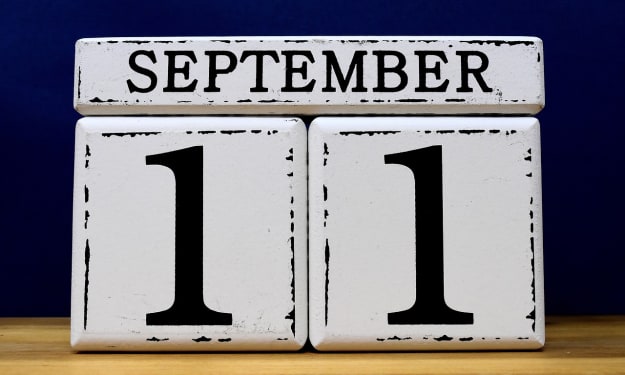Yoga Teacher's Instruction: A Comprehensive Guide
health best

Introduction
Yoga has become a global phenomenon, known for its physical, mental, and spiritual benefits. As the popularity of yoga continues to rise, the role of a yoga teacher becomes increasingly important. Yoga teachers are not just instructors; they are guides who help students navigate their yoga journey. This article will provide a comprehensive guide to yoga teacher instruction, covering everything from fundamental principles to effective teaching techniques.
Understanding the Role of a Yoga Teacher
Definition and Responsibilities
A yoga teacher is responsible for guiding students through yoga practices, ensuring they perform poses correctly, and promoting overall well-being. This role goes beyond demonstrating poses; it includes creating a safe environment, offering personalized guidance, and fostering a sense of community.
Essential Qualities of a Good Yoga Teacher
A good yoga teacher is knowledgeable, empathetic, and passionate about yoga. They possess excellent communication skills, patience, and the ability to adapt to the needs of their students. Integrity and continuous self-improvement are also crucial qualities.
Fundamentals of Yoga Teaching
Basic Principles of Yoga
Yoga is rooted in principles that promote physical, mental, and spiritual growth. These principles include breath control, mindfulness, alignment, and balance. Understanding these fundamentals is essential for effective teaching.
Understanding Different Yoga Styles
There are various yoga styles, each with unique characteristics. Some popular styles include Hatha, Vinyasa, Ashtanga, Bikram, and Yin Yoga. A proficient yoga teacher should be familiar with these styles and able to teach or incorporate elements from them as needed.
Importance of Proper Training
Proper training ensures that yoga teachers are equipped with the knowledge and skills necessary to teach safely and effectively. Training programs cover anatomy, physiology, teaching techniques, and philosophy.
Certification Programs and Their Requirements
Certification programs, such as those offered by Yoga Alliance, require a minimum number of training hours and coursework completion. These programs ensure that teachers meet industry standards and are qualified to instruct students.
Creating a Safe and Inclusive Environment
Importance of a Welcoming Space
A welcoming environment is essential for students to feel comfortable and supported. This includes a clean, organized space with appropriate props and a positive atmosphere.
Techniques for Ensuring Safety in Classes
Safety is paramount in yoga classes. Teachers should provide clear instructions, demonstrate proper alignment, and offer modifications to prevent injuries. Being attentive to students' needs and limitations is crucial.
Class Planning and Preparation
Structuring a Yoga Class
A well-structured class includes a warm-up, peak poses, cool-down, and relaxation. Each segment should flow smoothly, with a balance of physical challenge and rest.
Preparing Lesson Plans
Effective lesson planning involves setting objectives, selecting appropriate poses, and considering the needs of the students. Lesson plans should be flexible to accommodate varying skill levels and energy.
Effective Communication Techniques
Verbal and Non-Verbal Communication
Clear communication is key to effective teaching. This includes verbal cues, demonstrations, and non-verbal signals like eye contact and body language.
Providing Clear and Concise Instructions
Instructions should be simple, direct, and easy to follow. Avoid jargon and speak in a calm, confident manner. Repetition and reinforcement can help students understand and retain information.
Teaching Techniques for Different Levels
Adapting Instruction for Beginners, Intermediate, and Advanced Students
Each student has unique needs and abilities. Teachers should adapt their instruction to suit beginners, who may need more guidance, as well as intermediate and advanced students, who may require more challenging poses.
Addressing Individual Needs
Personalization is key to effective teaching. This involves offering modifications, paying attention to students' feedback, and being responsive to their physical and emotional states.
Hands-On Adjustments and Assists
Importance of Physical Adjustments
Physical adjustments can help students achieve proper alignment and deepen their practice. However, they must be done with care and consent to ensure safety and comfort.
Techniques for Safe and Effective Assists
Effective assists involve gentle, supportive touch and clear communication. Teachers should always ask for permission before making adjustments and be mindful of students' boundaries.
Incorporating Mindfulness and Meditation
Importance of Mindfulness in Yoga
Mindfulness enhances the yoga experience by promoting awareness and presence. It helps students connect with their breath, body, and mind.
Techniques for Teaching Meditation
Meditation can be integrated into yoga classes through guided sessions, breathing exercises, and moments of stillness. Teachers should provide simple instructions and create a peaceful environment.
Building a Personal Connection with Students
Importance of Rapport
Building rapport fosters trust and a sense of community. It encourages students to attend classes regularly and engage more deeply in their practice.
Techniques for Connecting with Students
Personal interactions, remembering names, offering encouragement, and showing genuine interest in students' progress are effective ways to build connections.
Continuing Education and Personal Practice
Importance of Ongoing Learning
Continuing education helps teachers stay updated with new techniques, research, and trends in yoga. It enhances their teaching skills and knowledge.
Balancing Teaching with Personal Practice
Maintaining a personal yoga practice is essential for teachers. It keeps them grounded, inspired, and connected to their own yoga journey.
Navigating Challenges in Yoga Teaching
Common Challenges Faced by Yoga Teachers
Yoga teachers may face challenges such as varying student abilities, classroom management, and maintaining their own well-being.
Strategies for Overcoming These Challenges
Strategies include setting clear boundaries, seeking mentorship, and practicing self-care. Flexibility and resilience are key to navigating these challenges effectively.
Marketing and Growing Your Yoga Business
Techniques for Attracting Students
Effective marketing involves using social media, creating a professional website, and networking with the community. Offering workshops and special classes can also attract new students.
Strategies for Business Growth
Growing a yoga business requires consistency, quality teaching, and continuous improvement. Building a loyal student base and seeking feedback can help refine and expand offerings.
Conclusion
Becoming a proficient yoga teacher requires dedication, continuous learning, and a passion for helping others. By understanding the fundamentals, creating a safe environment, and connecting with students, yoga teachers can make a significant impact on their students' lives. This comprehensive guide provides the foundation for aspiring yoga teachers to embark on their journey with confidence and clarity.
FAQs
What qualifications do I need to become a yoga teacher?
To become a yoga teacher, you typically need to complete a 200-hour training program certified by a recognized organization like Yoga Alliance. Additional certifications and specializations can further enhance your qualifications.
How can I improve my yoga teaching skills?
Improving your teaching skills involves continuous learning, seeking feedback, attending workshops, and maintaining a personal practice. Observing experienced teachers and staying updated with yoga trends can also help.
What are some effective ways to build a student base?
Building a student base involves marketing efforts like social media promotion, offering introductory classes or workshops, and creating a welcoming environment. Personal recommendations and word-of-mouth can also be powerful tools.
How do I handle difficult students in my yoga class?
Handling difficult students requires patience, clear communication, and setting boundaries. Addressing concerns privately and offering modifications can help manage challenging situations.
What are the benefits of continuing education for yoga teachers?
Continuing education helps yoga teachers stay current with new techniques, deepen their knowledge, and enhance their teaching skills. It also provides opportunities for personal growth and professional development.
About the Creator
minosh dilshan
I am Minosh from the USA. I specialize in selling top-quality items and am affiliated with leading brands in the industry.
Enjoyed the story? Support the Creator.
Subscribe for free to receive all their stories in your feed.






Comments
There are no comments for this story
Be the first to respond and start the conversation.